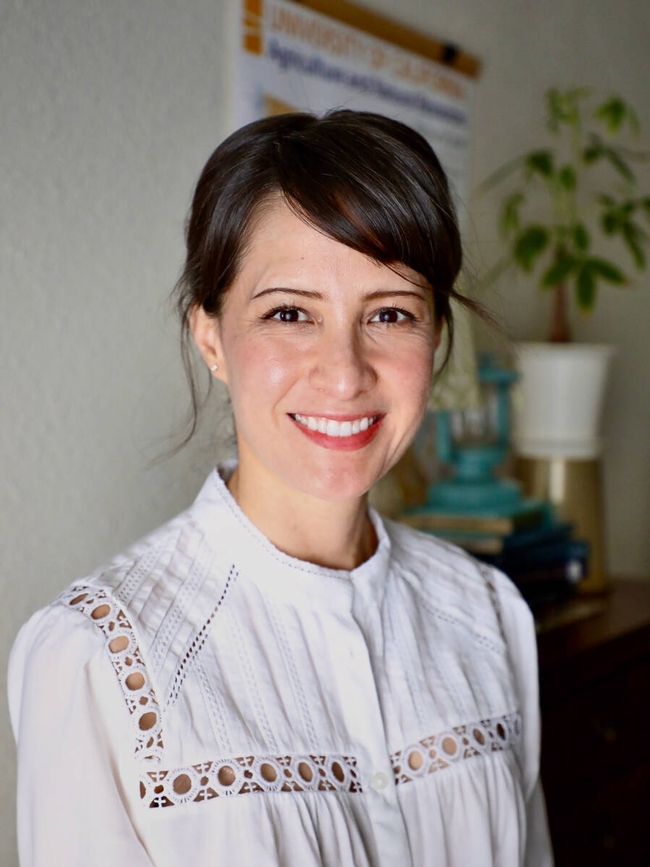This is one of a series of stories featuring a sampling of UC ANR academics whose work exemplifies the public value UC ANR brings to California.
Through the COVID-19 pandemic, UC Agriculture and Natural Resources has continued to work to safeguard abundant and healthy food for all Californians, promote healthy people and communities, build skills needed in the workforce and help to develop an inclusive and equitable society. For insights into how the pandemic is affecting life in California and UC ANR's programs in these areas, UC's research magazine, California Agriculture, spoke with UC Cooperative Extension specialist Karina Díaz Rios about nutrition. Below is the edited conversation.
California Agriculture: How is the coronavirus pandemic affecting food security for people in California?

California Agriculture: So the pandemic is affecting people's ability to get enough food to eat. Is it also affecting their ability to eat healthy food?
Karina Díaz Rios: Food-insecure people tend to spend more of their food money at convenience stores, where
prices are often higher than the larger grocery stores and the variety and quality are usually lower. This means that the overall quality of the diet of food insecure households is about 5% to 10% lower than households that are food secure. That doesn't sound like much, but the average diet quality of folks in the United States is already suboptimal — around 60 out of 100. If 100 is the highest-quality diet, 60 is not much more than halfway there. So a reduction of 5% to 10% is really consequential. The issue is not that food-insecure people make bad choices. In buying certain kinds of food instead of others, people are making the right choices based on their circumstances. Shopping in convenience stores might be the logical action when time or other resources, like transportation or income, are limited — and when planning meals maybe isn't realistic because of lack of practice or other competing priorities. It's difficult to plan when your income is unstable.
California Agriculture: How does all this affect the work that you do?
Karina Díaz Rios: This is an area where there are challenges, but also opportunities. The Cooperative Extension army of nutrition educators is very well suited to help overcome some of the obstacles that the pandemic has posed for accessing resources, whether in-kind resources like food assistance or educational resources. They know their communities. They can identify the needs in their communities and help address them more easily than people who are not in such good touch with the community. Another extremely good thing about our Cooperative Extension system in California is that people are very creative. We have people who can come up with solutions in a heartbeat and implement them.
California Agriculture: Lots of children around the state won't be returning to school in the fall, at least at first. What effect does remote education, as opposed to in-school education, have on the food security issues that you cover?
Karina Díaz Rios: A large number of low-income students who qualify for food assistance and school meal programs are not going to get those meals if they don't go to school. There are efforts in several school districts to make sure that low-income children are actually receiving these meals. These efforts are particularly key right now, but it takes a great deal of planning and resources to make it happen. But also, these school meals only represent, at best, two-thirds of the daily caloric needs for children who get breakfast and lunch from school. So they can still be on a caloric deficit if they don't have enough food at home, which again, is more likely to be the case because of the pandemic.
California Agriculture: Do you foresee that the coronavirus is going to cause any long-lasting changes in the realm of nutrition? Or, after a vaccine is developed, do you imagine that things will more or less go back to the way they were?
Karina Díaz Rios: I am concerned that the people most affected by higher food insecurity due to the pandemic are going to be children. A lack of nutrients, even for a limited time, can affect children's ability to grow and thrive. So I just hope that these days are not going to have a lasting impact on these children — but it's a possibility.